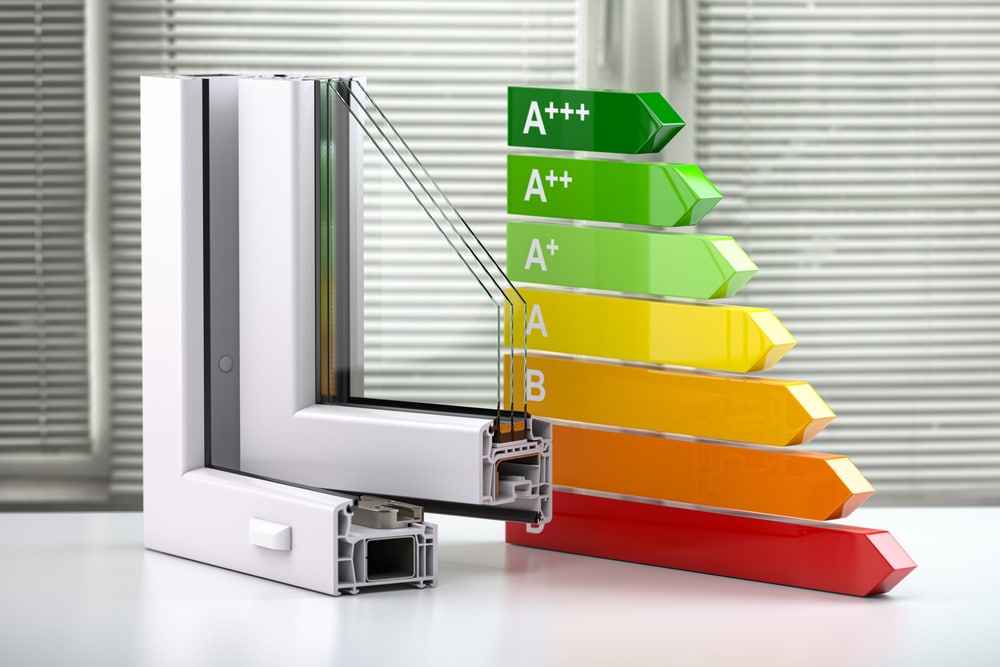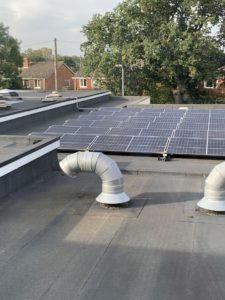Top tips on how to choose and install the most energy-efficient windows for your home or construction project.
Did you know that an enormous 18% of heat loss occurs through windows, with heat loss through single glazing twice as fast as through double glazing?
Window openings are breaks in a building envelope, and therefore need to be carefully considered and installed so that water and air leakage can be kept to a minimum. By doing this, you can reduce the chances of building damage and increase your energy efficiency – two gold stars in our books!
Plus, making your windows and conservatory more energy efficient will reduce your energy bills and lower your carbon footprint, contributing to the green agenda and UK net zero targets.
Read on to find out why it’s worth dividends to spruce up the energy efficiency of your windows.
Why is energy efficiency important when it comes to choosing windows?
Energy efficiency is important when choosing and installing windows because it will prevent both heated and cooled air from escaping your home. This will mean less draughts and cold spots, cutting your energy bills and making your home comfortable all year round.
In addition, water leakage is a real issue for windows with low energy efficiency. If you see water dripping from your window, this is likely due to poor installation methods and materials, cracks in the frame and/or bad sealant. It can cause serious problems, including damp and mould, as well as a sharp spike in your bills and even structural damage.
Badly insulated and installed windows are also a major contributor to thermal bridging. Thermal bridging refers to the areas in a building where heat can escape more readily than in the surrounding areas, and this can contribute to 30% of heat loss. Again, higher bills and also a dip in your energy performance rating. But the potential issues go deeper even than that. Thermal bridging can also bring about the risk of surface and interstitial condensation and mould growth due to the breakdown of insulation. This can present major issues (including health related) for those living in the property, as well as the property owner when it comes to property assessments.
RELATED: THERMAL BRIDGING AND SAP 10
Benefits of energy efficient windows.
So, you know WHY it’s important to have energy efficient windows, but what benefits will you actually see in your home or construction project?
The benefits truly are enormous, including:
- Lower utility costs
- Cooler temperatures in the warmer seasons, cosier temperatures in the colder months
- Less damage to furniture and building structure
- Less condensation, damp and mould
- Increased home value
- Increased curb appeal
- More light and views
- Better sound proofing
- Lower maintenance
- KINDER TO THE ENVIRONMENT!
YOU MIGHT BE INTERESTED IN: WILL SOLAR PANELS REPLACE WINDOWS?
AND ALSO: TRIPLE GLAZING | THE PROS AND CONS
How to install windows for maximum energy efficiency.
The way you install windows has an enormous impact on their energy efficiency. With this in mind, we’ve collated some of our top tips on how to install your windows for maximum efficiency.
1. Choose the right window frame material.
Choosing the right window frame material is likely going to be your first consideration. Each material has different benefits (and drawbacks), with the most common being fibreglass, vinyl, aluminium, wood and clad.
2. Choose windows with the best ratings.
WER is your Window Energy Rating. It looks at thermal efficiency, solar gain and air leakage through one basic rating. These move across an energy-rating scale from A++ to E, with A++ being the best performing windows for energy efficiency.
3. Take a look at Passive House windows.
The Passive House standard is the ultimate aim for energy and sustainability consultants. A Passive House window will be thermally broken, extremely airtight, triple glazed, with low e-glass and low U-value and high R-value.
READ: WHAT IS A PASSIVHAUS RETROFIT?
4. Explore triple glazing.
Speaking of triple glazing, even if you don’t opt for a passive house window, triple glazing is a great option to consider. Triple glazed windows are a popular choice of developers as they are brilliant at keeping the cold out and reducing your energy bills, but they can cost 20% more than double glazing.
5. Install window flashings.
After wrapping weather barriers into place on your windows and taping them down, we recommend installing window flashings that will safely direct any incidental water safely onto your weather barrier or drainage plane.
6. Consider angled bottom sills.
Another valuable option is designing window sills so that they sit at a slight angle out. This way, any water that does escape and drip down will shift towards the exterior of your home.
7. Put screws above or below window shims.
It’s really important not to put your screws through window shims when attaching windows – otherwise, you won’t be able to remove the shims once secured. Typically shims are wet when installed, and so they will dry out and shrink, adding an air leakage point to your window.
8. Ensure air seals are durable.
Low expanding spray foam is often used in window installations. While this is acceptable for insulation, it isn’t flexible enough to provide the right level of shifting while still providing an air seal. You could opt for an additional bead of acoustic seal, or even caulk/tape window frames to rough openings.
9. Use the highest performing air bucks.
You may be tempted to choose regular window bucks made of bog standard lumbar – but we strongly recommend you DO NOT do this! A high performance insulating window buck will be far better for the energy efficiency of your window, providing a continuous external strong layer of insulation.
Can Buildpass help me choose and install energy efficient windows?
Buildpass are the experts when it comes to the many intricate layers of building efficiency. And windows? They’re our bread and butter. So, we would love to talk to you about how you can ensure your windows offer maximum performance, efficiency and comfort for your next build.
Get in touch for a free consultation. We’d love to chat.




















